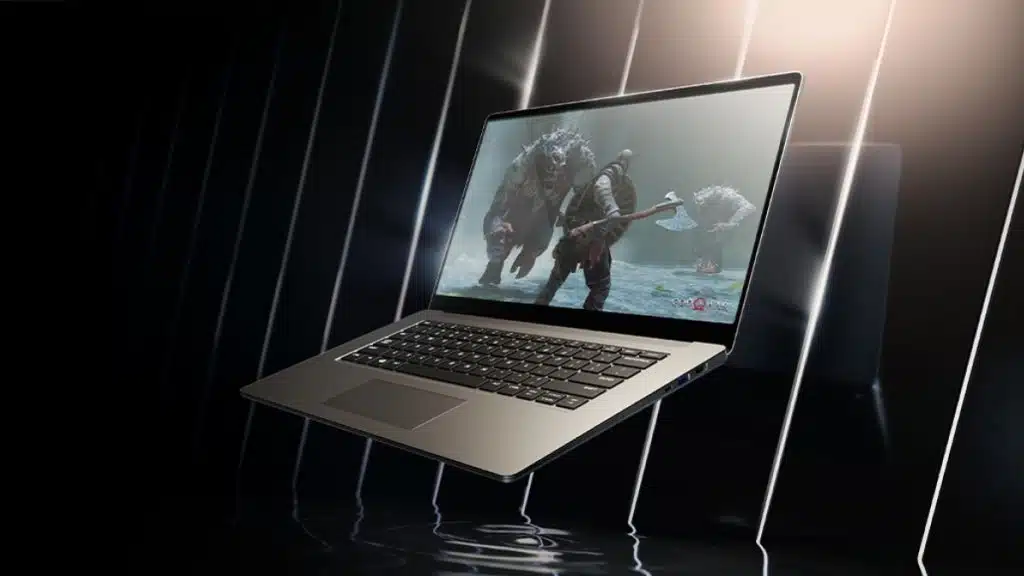
Rumored NVIDIA GeForce RTX 40 ADA GPU specs have surfaced showing the flagship RTX 4090 consuming as much as 200 Watts of power. A couple of weeks back NVIDIA’s mobile variants were spotted on HP’s website for its Omen gaming laptops and now detailed specs have also been leaked via WccfTech sources.
| GPU NAME | NVIDIA GEFORCE RTX 4090 | NVIDIA GEFORCE RTX 4080 | NVIDIA GEFORCE RTX 4070 | NVIDIA GEFORCE RTX 4060 | NVIDIA GEFORCE RTX 4050 |
|---|---|---|---|---|---|
| Process Node | TSMC 4N | TSMC 4N | TSMC 4N | TSMC 4N | TSMC 4N |
| GPU Core | AD103 | AD104 | AD106 | AD107 | AD107 |
| GPU SKU | GN21-X11 | GN21-X9 | GN21-X6 | GN21-X4 | GN21-X2 |
| VRAM | 16 GB | 12 GB | 8 GB | 8 GB | 6 GB |
| Base Clock (Standard TGP) | ~1.59 GHz | ~1.86 GHz | ~2.07 GHz | TBD | ~2.37 GHz |
| Boost Clock (Standard TGP) | ~2.04 GHz | ~2.28 GHz | ~2.17 GHz | TBD | ~2.37 GHz |
| TBP | 150-175W (+25W DB) | 150-175W (+25W DB) | 115-140W (+25W DB) | 115-140W (+25W DB) 85W (+10W DB) | 115-140W (+25W DB) 85W (+10W DB) |
All of these rumored NVIDIA GeForce RTX GPUs are based on a TSMC 4N node and feature a dynamic boost profile. The exact types of memory (GDDR6/GDDR6X) and bus speeds are not yet known. At the top of the stack is the GeForce RTX 4090 which is an AD103 core with 16 GB of VRAM and clock speeds of around 1.59 GHz (Base)/2.04 GHz(Boost). The GeForce RTX 4080 is an AD104 GPU with 12 GB of VRAM and clock speeds of around 1.86 GHz (Base)/2.28 GHz (Boost). Both GPUs have a power draw of 150-175 Watts with up to an additional 25 Watts for boost meaning they can potentially draw as much as 200 Watts. Laptop manufacturers will no doubt be needing some hefty power bricks to power these and their accompanying CPUs.
Next are the mid to low-tier end GPUs which nearly all feature a more modest TBP range of 115-140 Watts but with varying boost power draw. In the middle of the entire stack is the GeForce RTX 4070 which uses an AD106 core paired with 8 GB of VRAM and clock speeds of around 2.07 GHz (Base)/2.17 GHz (Boost). It retains the boost power of up to 25 Watts meaning it could draw as much as 165 Watts of power. Next are the GeForce RTX 4060 and RTX 4050 which each use an AD107 core and both, depending on variants have a TBD of 115-140 Watts with 25 Watts boost or 85 Watts with 10 Watts of boost. The RTX 4060 is said to feature 8 GB of VRAM, clock speeds are currently unknown, while the RTX 4050 is to be paired with 6 GB of VRAM and have clock speeds of around 2.37 GHz.
NVIDIA is expected to unveil these at CES 2023 and if ADA follows the trends set previously by AMPERE, there will more than likely be even more variants of these GPUs. These will all presumably feature NVIDIA’s latest RTX DLSS 3 features.
